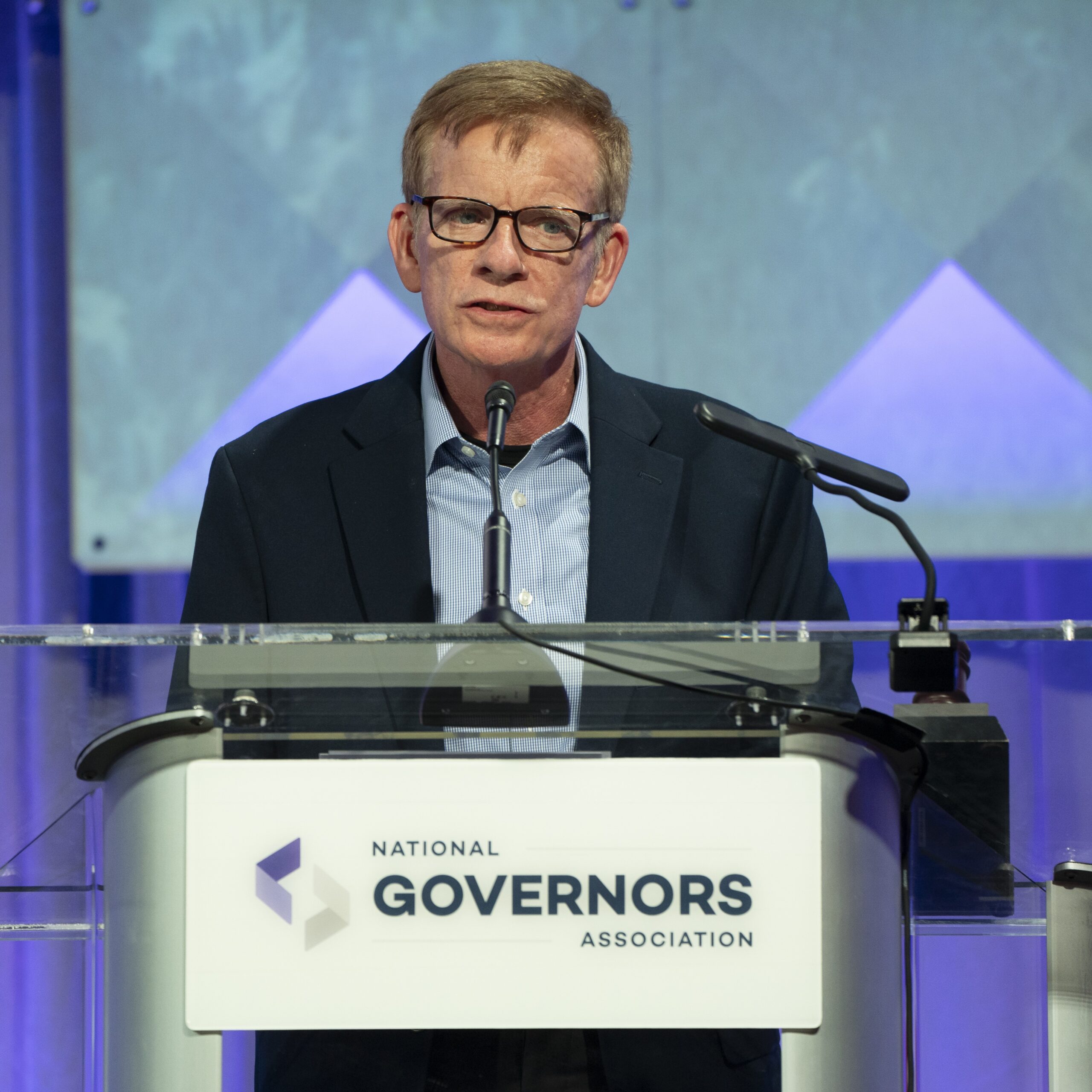A lack of psychiatrists, clinical social workers, therapists and other healthcare workers severely limits a state’s ability to serve workers experiencing stress, anxiety, depression and other mental health conditions that affect their well-being and performance in the workplace.
By Sophia Yager
According to the Centers for Disease Control and Prevention, more than half of Americans will be diagnosed with a mental health condition in their lifetime, and the COVID-19 pandemic only exposed and heightened these challenges. Many Americans living with mental and behavioral health conditions often experience associated barriers to entering and maintaining employment, such as challenges with workplace communication and inability to complete physical tasks. Yet over one-third of Americans live in an area with a shortage of qualified mental health professionals. A lack of psychiatrists, clinical social workers, therapists and other healthcare workers severely limits a state’s ability to serve workers experiencing stress, anxiety, depression and other mental health conditions that affect their well-being and performance in the workplace. As states struggle with workforce shortages across sectors, supporting workers with mental and behavioral health barriers as they reenter the workforce is critical to both individual and statewide economic resilience.
Governors and state policymakers have an opportunity to develop short- and long-term solutions to address this shortage and better serve workers facing these barriers to employment. Leveraging partnerships between state and community partners, these strategies empower states to identify their workforce demands and gaps, invest in training and career pathways for a sustainable talent pipeline, and explore more rapid solutions to meet the most urgent workforce needs in this field.
Identify Workforce Demand and Gaps
An important first step in addressing this workforce shortage is quantifying the existing supply and demand for mental and behavioral health services and analyzing gaps in labor force and service availability. Data from sources such as labor market information offices, occupational licensing bodies, industry groups, regulatory boards and employers can help state leaders determine the current and projected supply of mental and behavioral health professionals. States can work with community partners including regional or local mental or behavioral clinics to determine current demand for services and any shortages or barriers to accessing services based on geographic area or other patient demographics. Many states have also assembled interagency task forces or working groups to lead these data collection and analysis efforts and develop strategic plans based on their findings.
The Ohio Department of Mental Health and Addiction Services, the Ohio Governor’s Office of Workforce Transformation, InnovateOhio, and Deloitte conducted a needs assessment study in April 2021 for the state’s behavioral health workforce to determine the current and future supply and demand for these services. Using data provided by 11 state agencies, the state was able to determine demand by geography, type of practitioner, patient age, facility and service type; conduct a detailed practitioner supply analysis and forecast supply and demand at the statewide and county level. The state has convened a multi-agency workforce advisory team who will leverage this analysis to make data-driven investments in strategic workforce priorities. In May 2022 , Governor DeWine invested $85 million in American Rescue Plan Act (APRA) funds to provide paid internships, scholarships and cost relief for licensure or certification to help behavioral health professionals obtain credentials quickly and affordably through Ohio’s ARPA-funded Home and Community-Based Services (HCBS) Workforce Development Strategic Fund.
Invest in Training Programs and Career Pathways
To increase the number of qualified professionals and ensure a sustainable pipeline of future workers, states can invest in training programs and career pathways in mental and behavioral health. This includes building awareness of occupations and pathways in this field and bolstering existing training programs or developing new ones. States can think strategically about building pathways that combine short-term training with long-term professional development opportunities, incorporating certificate programs, degree programs, apprenticeships and internships that meet a state’s unique labor force needs and lead to high-quality job opportunities. To promote equitable access to services, education opportunities and employment, states can work to expand these programs in underserved areas and reduce barriers to enter these careers for those from historically marginalized communities.
In August 2022, Wisconsin Governor Tony Evers invested $9.1 million in ARPA grants to expand the state’s Qualified Treatment Trainee Grants Program and build educational pathways in behavioral health. The Qualified Treatment Trainee Grants Program allows behavioral health providers to recruit and support trainees in providing clinical care under supervision to meet requirements for clinicians to become fully licensed providers. The funding will be awarded by the state’s higher education partner, UW-Whitewater, directly to provider agencies to hire and supervise trainees, and additional funding will be leveraged to expand the network of sponsor agencies (especially those located in underserved areas or those serving uninsured or underinsured patients) and provide $5,000 annual stipends for trainees in unpaid internship programs.To expand behavioral health educational pathways, UW-Whitewater will pilot a program to help students move from associate degrees in human services to bachelor’s degrees in social work. The state is also investing in the development of a post-master’s certificate in treating people dually diagnosed with mental health and substance use disorders.
Idaho Governor Brad Little established the Idaho Behavioral Health Council through executive order in February 2020 to develop and implement a statewide strategic plan to assess the state’s behavioral health system, determine Idahoans’ needs and recommend actions and policies to ensure an “effective, efficient, recovery-oriented behavioral healthcare system.” One of these recommendations was to develop a behavioral health workforce plan that increases the state’s pool of licensed behavioral health
professionals. This plan outlines strategies to expand high-quality training opportunities including establishing a Recovery Coach Training Academy funded by the Idaho Department of Health to increase the number of certified professionals to support workers seeking recovery or who are in recovery from substance use disorders. The plan also establishes a partnership with the Idaho Workforce Development Council to leverage Idaho LAUNCH, an online career and training research hub and training fund, to promote and fund training opportunities for high-demand behavioral health careers including Peer Support Specialists, Family Support Partners and Certified Prevention Specialists.
Explore Licensing and Recruitment Strategies
To meet more immediate workforce challenges, states can reduce barriers to professional licensure for mental and behavioral health workers and provide recruitment incentives. States may consider permanent or temporary changes to professional licensure requirements such as expediting licenses for inactive or retired practitioners, reducing or removing licensing fees, providing temporary licenses or expanding the scope of practice for certain licenses and implementing licensing reciprocity or compacts for credentials earned in other states or countries. Other recruitment incentives may include tuition assistance or reimbursement, loan repayment, stipends or paid work-based learning opportunities, sign on or retention bonuses, tax credits and housing or other relocation supports, all of which could be tied to these individuals working in underserved communities. Reducing these barriers to entering these fields also helps to diversify the workforce in an industry where lived experience is a growing priority to deliver the highest quality services.
Illinois Governor JB Pritzker signed legislation in June 2022 to address the state’s shortage of mental health professionals and increase access to mental health services. The bill temporarily directs the Illinois Department of Financial and Professional Regulation to allow professional licensees who have been out of practice for less than five years to reactivate their license, making it easier for in-demand practitioners to reenter the workforce. The legislation also allows the Illinois Department of Human Services Division of Mental Health to make grants or contracts to community mental health centers or behavioral health clinics to expand training and supervision of behavioral health providers-in-training (with an emphasis on underserved urban and rural areas) to reduce barriers to professional licensure requirements for new practitioners.
Additional Resources:
- National Conference of State Legislatures: State Strategies to Recruit and Retain the Behavioral Health Workforce
- National Governors Association Next Generation of the Healthcare Workforce Project
- National Governors Association and Technical Assistance Collaborative: Behavioral Health Equity For All Communities: Policy Solutions To Advance Equity Across The Crisis Continuum
- National Academy for State Health Policy: State Strategies to Increase Diversity in the Behavioral Health Workforce
- National Governors Association: Promoting Employment For People With Disabilities Through Statewide Coordination
- National Governors Association: Governors’ Role In Promoting Disability Employment In COVID-19 Recovery Strategies
This commentary is supported through NGA’s participation in the State Exchange on Employment & Disability (SEED), a unique state-federal collaboration facilitated by the United States Department of Labor Office of Disability Employment Policy to support state and local governments in adopting and implementing inclusive policies and best practices that lead to increased employment opportunities for people with disabilities, and a stronger, more inclusive American workforce and economy.












